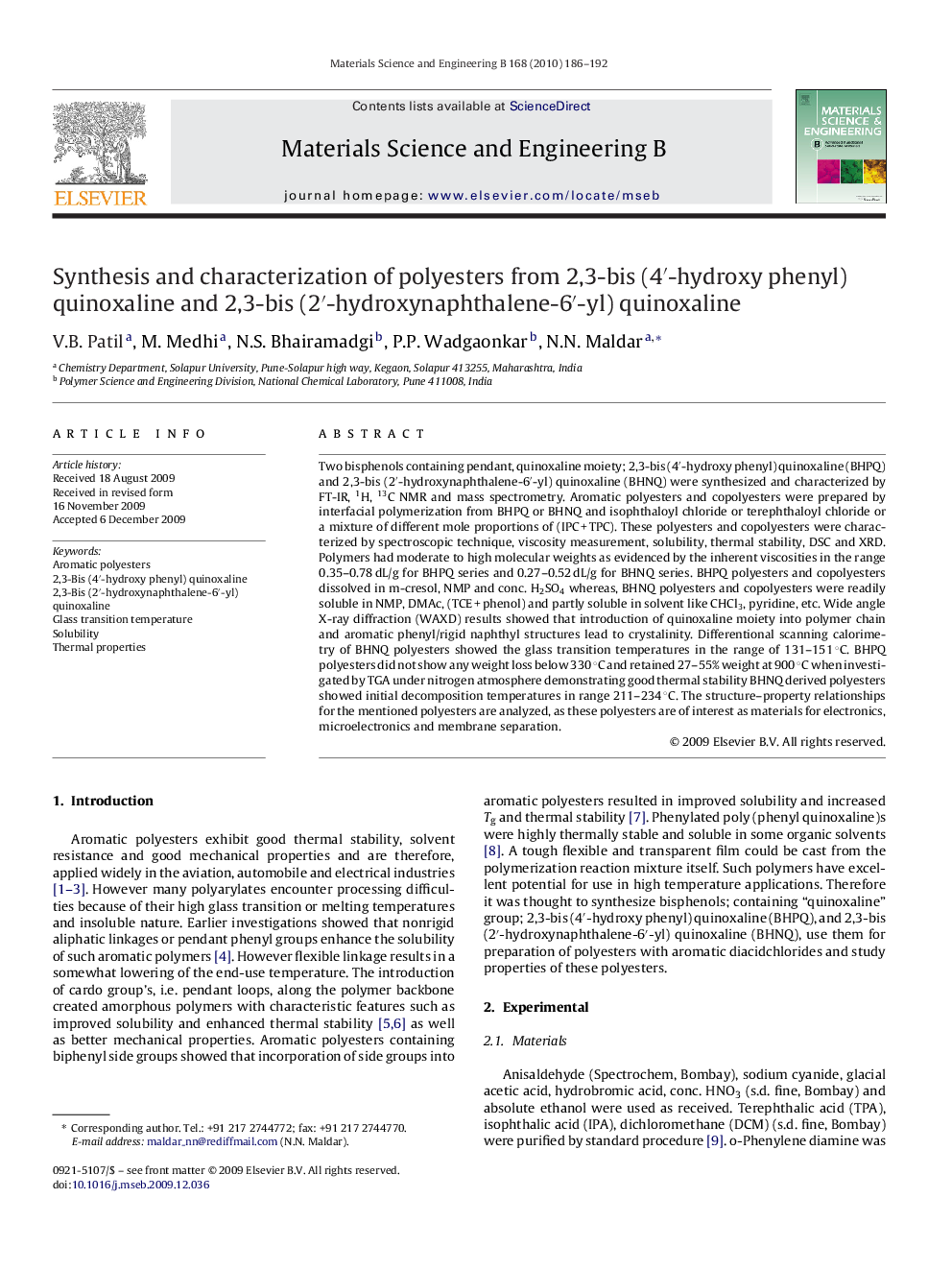| Article ID | Journal | Published Year | Pages | File Type |
|---|---|---|---|---|
| 1530428 | Materials Science and Engineering: B | 2010 | 7 Pages |
Two bisphenols containing pendant, quinoxaline moiety; 2,3-bis (4′-hydroxy phenyl) quinoxaline (BHPQ) and 2,3-bis (2′-hydroxynaphthalene-6′-yl) quinoxaline (BHNQ) were synthesized and characterized by FT-IR, 1H, 13C NMR and mass spectrometry. Aromatic polyesters and copolyesters were prepared by interfacial polymerization from BHPQ or BHNQ and isophthaloyl chloride or terephthaloyl chloride or a mixture of different mole proportions of (IPC + TPC). These polyesters and copolyesters were characterized by spectroscopic technique, viscosity measurement, solubility, thermal stability, DSC and XRD. Polymers had moderate to high molecular weights as evidenced by the inherent viscosities in the range 0.35–0.78 dL/g for BHPQ series and 0.27–0.52 dL/g for BHNQ series. BHPQ polyesters and copolyesters dissolved in m-cresol, NMP and conc. H2SO4 whereas, BHNQ polyesters and copolyesters were readily soluble in NMP, DMAc, (TCE + phenol) and partly soluble in solvent like CHCl3, pyridine, etc. Wide angle X-ray diffraction (WAXD) results showed that introduction of quinoxaline moiety into polymer chain and aromatic phenyl/rigid naphthyl structures lead to crystalinity. Differentional scanning calorimetry of BHNQ polyesters showed the glass transition temperatures in the range of 131–151 °C. BHPQ polyesters did not show any weight loss below 330 °C and retained 27–55% weight at 900 °C when investigated by TGA under nitrogen atmosphere demonstrating good thermal stability BHNQ derived polyesters showed initial decomposition temperatures in range 211–234 °C. The structure–property relationships for the mentioned polyesters are analyzed, as these polyesters are of interest as materials for electronics, microelectronics and membrane separation.
